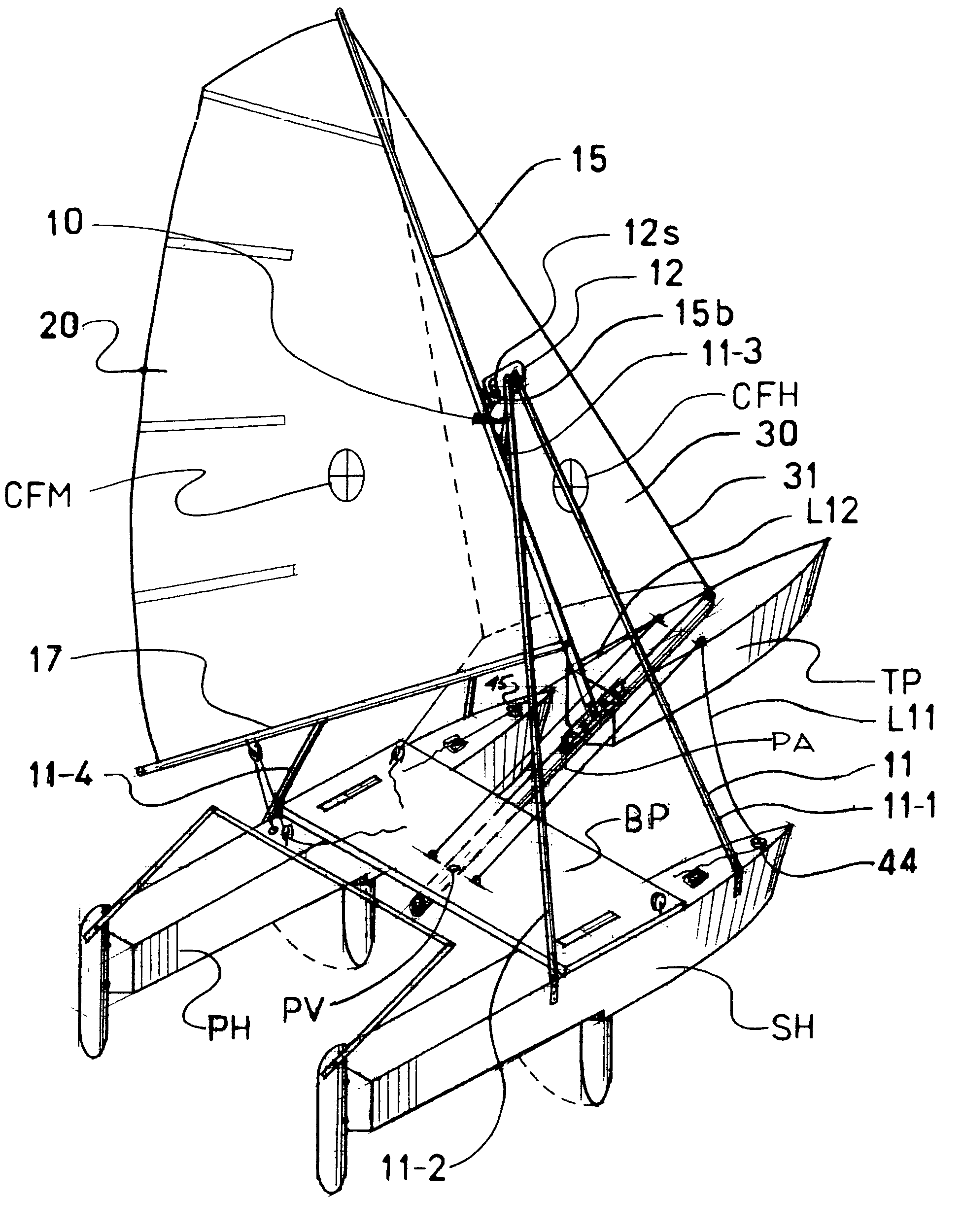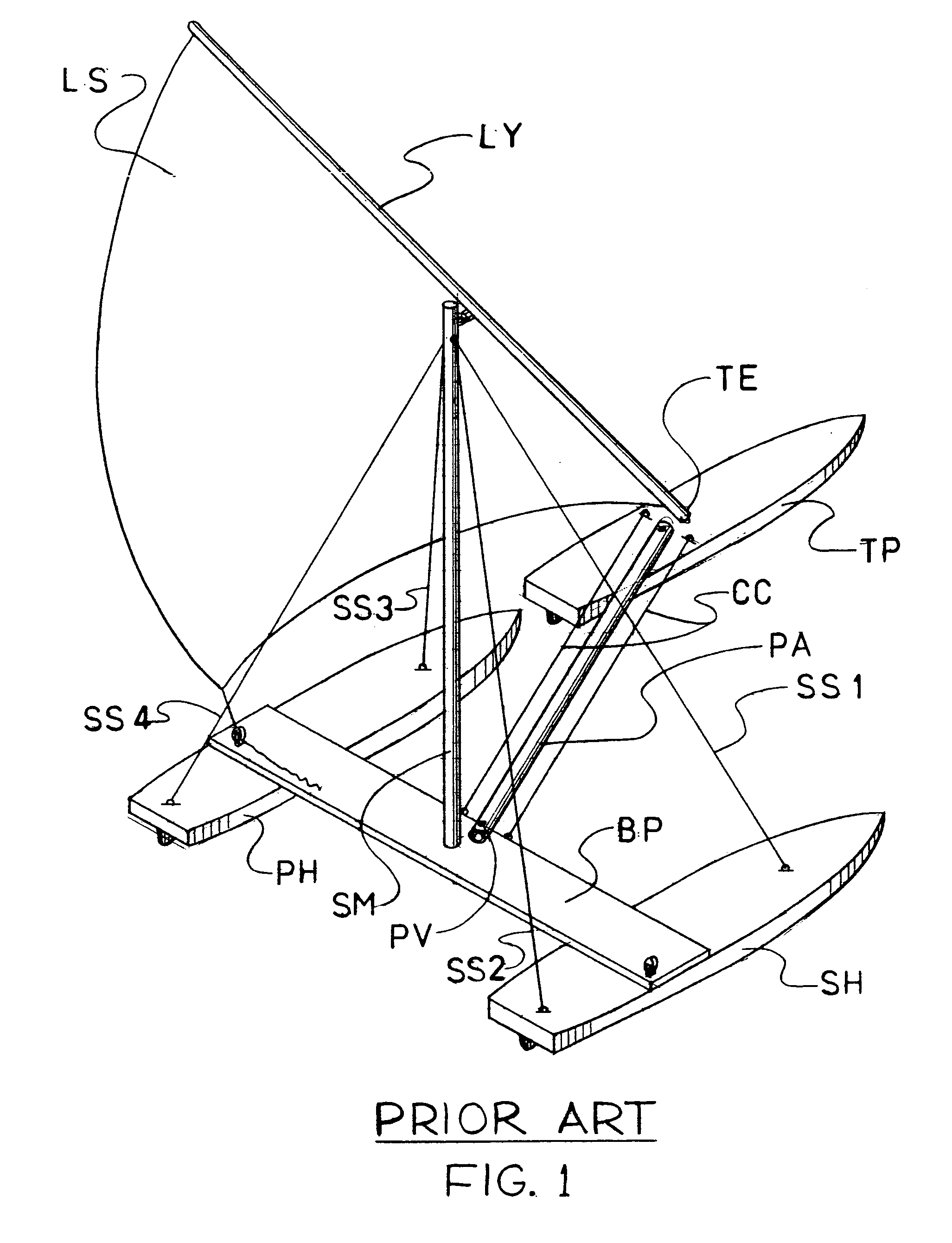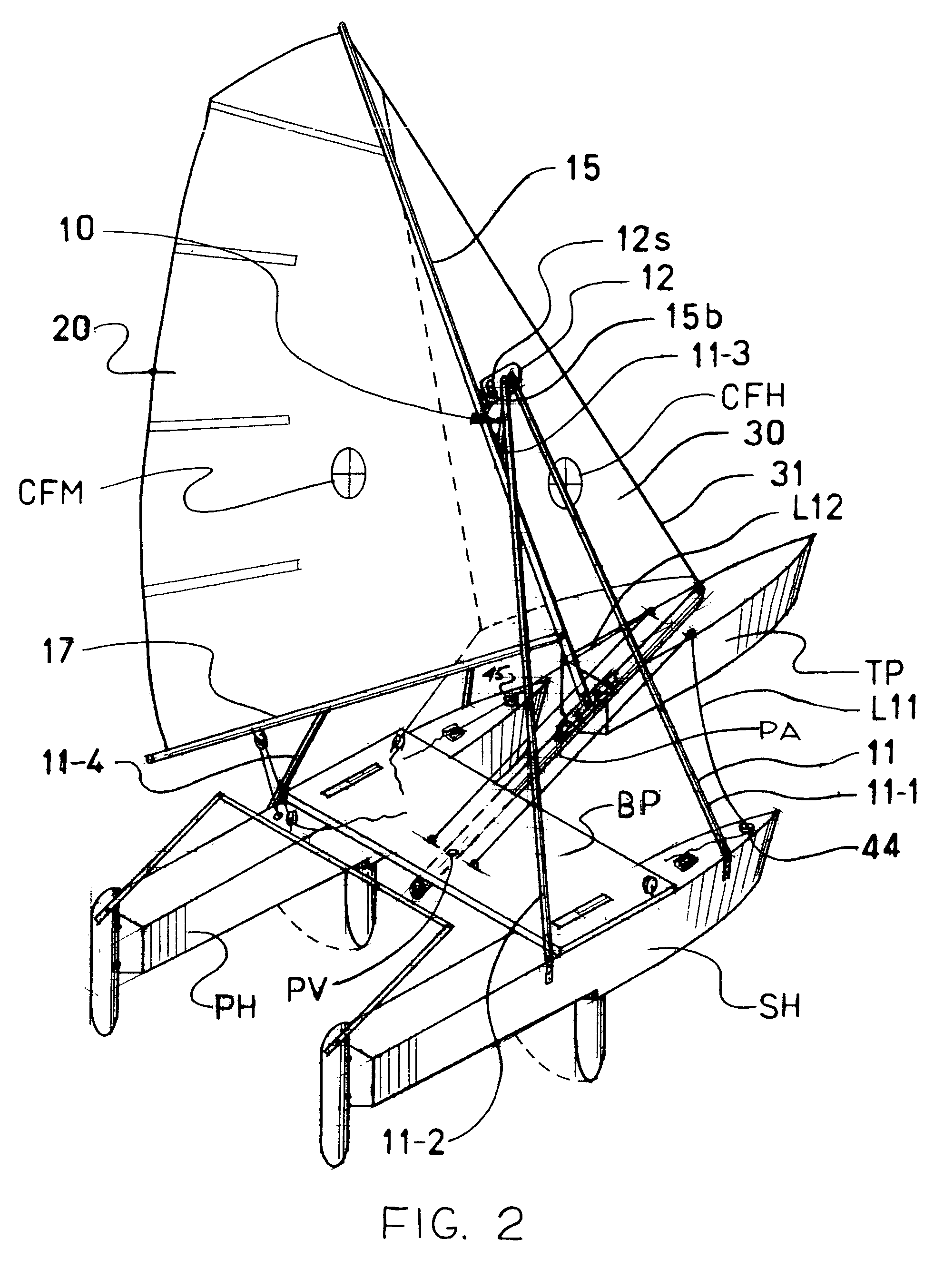Articulated sailing watercraft
a watercraft and hull technology, applied in the field of sail-driven watercraft, can solve the problems of affecting the the loss of windward performance, and the general asymmetry of sailing performance of the catamaran when beating or sailing towards the wind, and achieves the effect of increasing the length of the lee hull, convenient use, and being easy to manufactur
- Summary
- Abstract
- Description
- Claims
- Application Information
AI Technical Summary
Benefits of technology
Problems solved by technology
Method used
Image
Examples
Embodiment Construction
[0022]The prior art development of a sailing catamaran provided with a pivotally articulated third pontoon is best described by reference to FIG. 1 wherein the starboard and port hulls SH and PH, respectively, are fixed in spaced parallel alignment by a bridging piece BP which, at its center, supports a stub mast SM. A set of shrouds SS1–SS4 extending in pairs from the respective hulls are then utilized to rig the stub mast vertically to support the long yard LY (otherwise sometimes referred to as the crossbar) of what is most closely described as a lateen rigged sail LS. While in current practice sail LS may be fully battened and shaped for maximized performance, this particular rigging demands that, like in a windsurfer, directional changes are best effected by gybing. In the particular prior art example referred to herein the use of a lateen rig is dictated by a pivoted arm PA extending forwardly from a pivot PV centered on the bridging piece BP to articulate a third pontoon TP i...
PUM
 Login to View More
Login to View More Abstract
Description
Claims
Application Information
 Login to View More
Login to View More - R&D
- Intellectual Property
- Life Sciences
- Materials
- Tech Scout
- Unparalleled Data Quality
- Higher Quality Content
- 60% Fewer Hallucinations
Browse by: Latest US Patents, China's latest patents, Technical Efficacy Thesaurus, Application Domain, Technology Topic, Popular Technical Reports.
© 2025 PatSnap. All rights reserved.Legal|Privacy policy|Modern Slavery Act Transparency Statement|Sitemap|About US| Contact US: help@patsnap.com



